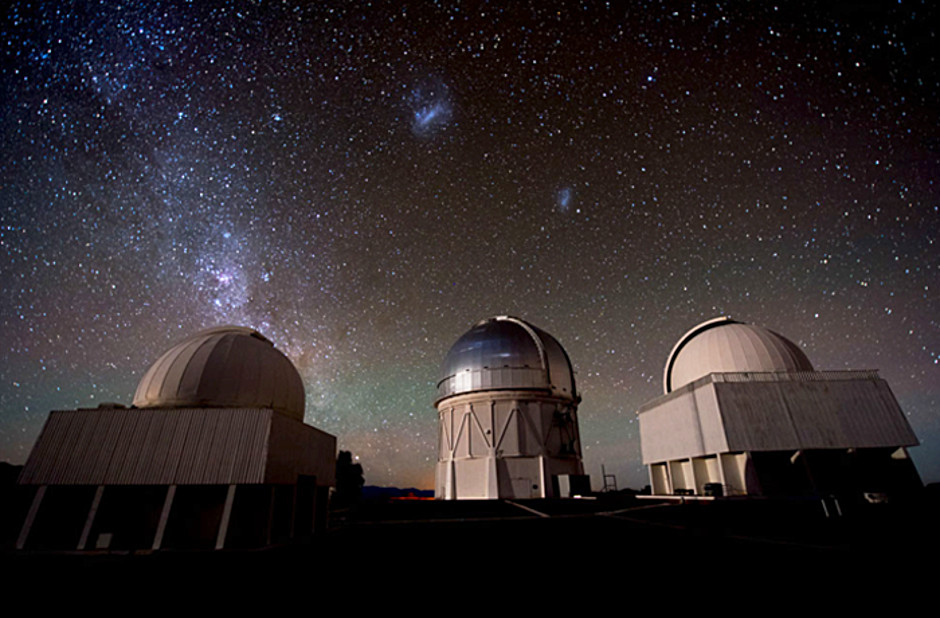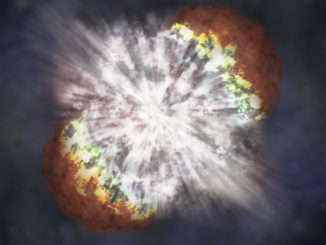
At the International Astronomical Union meeting yesterday, the International Dark-Sky Association announced that the site of the Association of Universities for Research in Astronomy (AURA) Observatory in the Elqui Valley of northern Chile has been recognized and designated as the first International Dark Sky Sanctuary in the world. The site will be known as the “Gabriela Mistral Dark Sky Sanctuary” after the famed Chilean poet.
“The Gabriela Mistral Dark Sky Sanctuary will serve as an example of how collaboration among governmental and non-governmental stakeholders can preserve one of the most special places on the planet”, said IDA Executive Director J. Scott Feierabend.
The new IDA designation category reflects the need for special protections for the world’s darkest places where nighttime conditions are exceptionally threatened. In certain cases, the public may be excluded from these sites in order to further important conservation priorities.
“Dark Sky Sanctuaries are the rarest and most fragile dark places left on the planet,” IDA Dark Sky Places Program Manager John Barentine explained. “The Sanctuaries designation fills a need for the recognition and protection of examples of how the world appeared before the introduction of electric lighting.”
Yesterday’s announcement is the first instance in which a professional observatory has received IDA recognition for its dark-skies stewardship and provides a model for many other ground-based astronomical research facilities, where the protection of dark skies is critical to their research mission and to protecting decades or even a century old investment in research. AURA has worked closely with the Chilean government, which has passed a number of outdoor lighting regulations designed to save energy and preserve the night skies in northern Chile.
Former AURA Observatory Director Dr. Malcolm Smith pointed out the benefits the facility brings to Chile. “The Observatory night skies are a resource that belongs to all Chileans as an important part of their heritage,” he said.
Ambassador Gabriel Rodriguez of the Chilean Ministry of Foreign Affairs added “The Chilean government has prioritised the protection of the dark skies of northern Chile through both regulation and education, but more importantly through its recognition that Chile’s night skies are a natural resource to be preserved and passed on from generation to generation.”
The sanctuary site contains more than 35,000 hectares (90,000 acres) of mountainous terrain, and hosts four major research facilities: the Cerro Tololo Inter-American Observatory (CTIO, the southern branch of the U.S. National Optical Astronomy Observatory); the Gemini-South 8-metre telescope; the 4-metre Southern Astrophysical Research (SOAR) telescope; and the Large Synoptic Survey Telescope (LSST), which is currently under construction. The AURA Observatory also hosts many smaller astronomical, atmospheric and geological research projects on the site.
Over the past 50 years, the U.S. and international partners have invested over a billion U.S. dollars in astronomical telescopes and advanced instruments on the AURA Observatory site, facilities that are planned to be operational for at least another five decades.
Securing the integrity of natural night at one of the most famous astronomical research sites in the world requires educating nearby communities and adopting good outdoor lighting practices. AURA Observatory in Chile has committed to a long-term program preserving these dark skies through a lightning management plan coupled with extensive education and public outreach efforts. The Chilean institution responsible for the protection of the quality of the night skies, the Oficina de Protección de Calidad de los Cielos (OPCC), is also involved.
The Dark Sky Sanctuary designation is only a beginning for the region. “If our collective efforts around the Elqui Valley are successful, we will have further protections for the incredible resource of Chile’s dark skies” said Dr. R. Chris Smith, director of the AURA Observatories in Chile. “Not only will this area attract further world-class professional observatories, it is becoming a world destination for eco-tourism with its incredible array of tourist-oriented observatories and night sky viewing sites.”
The Sanctuary is named after the Chilean Nobel prize-winning poet Gabriela Mistral (born 1889 in Vicuña, Chile; died 1957, Hemstead, New York USA) who grew up in the Elqui Valley and whose poetry reflects a love and tenderness towards these wonderful skies. In Carro Del Cielo (Sky Car), she expressed these distinguished sentiments:
“Lift up your face, child, and receive the stars. When you first look, they all pierce and freeze you, And then the sky begins to sway like a cradle they’re rocking, and you give yourself up wholly to be carried away, away.”
She was awarded the Nobel Prize in literature in 1945. The Noble Prize was given “for her lyric poetry which, inspired by powerful emotions, has made her name a symbol of the idealistic aspirations of the entire Latin American world.”



